UK mobile usage patterns
The latest market research from TNS reveals non-core service usage patterns among UK mobile customers in great detail.
April 28, 2009

Taking and sending photographs were the two most popular non-core mobile services among UK users in 2008, according to data supplied exclusively to telecoms.com from market research specialist TNS.
65 per cent of UK mobile users have taken photographs with their handsets, and 44 per cent have then sent the files to other users, a year on year increase of 33 per cent and 63 per cent respectively. While other services are less widely used, growth in their popularity is strong. Only 14 per cent of users surveyed have sent video files, but this is a 75 per cent increase on the number for 2007.
The data come from TNS’ ComTech research project, which sees 170,000 users in the UK, Spain, Germany, Italy and France interviewed about their usage of mobile and fixed telephony, broadband and TV. The UK-the first market for which TNS has published results-has the largest sample user base, with 15,000 customers aged 12 and above interviewed during 2008.
Top ten most popular mobile services in the UK 2008
Service | Penetration | 2008 position | 2007 position | Year on year growth |
Taking pictures | 66% | 1 | 1 | +33% |
Sending pictures | 44% | 2 | 2 | +63% |
Using Bluetooth | 36% | 3 | Not ranked | n/a |
Playing games | 35% | 4 | 4 | +59% |
Listening to music | 31% | 5 | 6 | +72% |
Making videos | 31% | 6 | 3 | +24% |
Connected phone to computer | 25% | 7 | Not ranked | n/a |
Internet browsing | 24% | 8 | 5 | +33% |
FM radio | 22% | 9 | 7 | +57% |
Sending videos | 14% | 10 | 10 | +75% |
The 12 – 18 year old age group was the most voracious user of all services, apart from internet browsing, which proved more popular with both the 19 – 24 year old and 25 – 34 year old demographics. While the oldest group, 55 and above was unsurprisingly the lowest using of all demographics, penetration of some services was reasonable. 44 per cent of users in this age range had taken photos with their handsets and 25 per cent had sent them.
Penetration among male and female users was very close for some services, with females marginally more likely to take and send photographs and to make videos. Male users were slightly more inclined to use Bluetooth, play games and listen to music. The popularity of internet browsing and email was markedly higher among males than females.
Nokia was the handset vendor of choice among users surveyed, with the N95 in the top two or three handsets for all services. Sony Ericsson’s K800i was also popular, and Apple’s iPhone making an appearance, as might be expected, in the categories of internet browsing, music and game downloading (distinct from music and game playing) and email usage. With 12.4 per cent of users surveyed having downloaded music directly to their handset, 12.2 per cent having downloaded a game and 11.5 per cent of customers having used mobile email, these services did not rank inside the top ten.
Highest spending customers in the UK during 2008 by favourite service
Prepay
Service | ARPU | Service | ARPU |
Podcasts | £24.71 | Wifi usage | £42.07 |
Text alerts | £21.59 | GPS | £41.43 |
Mobile TV | £21.23 | Maps | £41.40 |
Video calls | £20.82 | Podcasts | £41.36 |
Video download | £20.36 | Social networking | £40.19 |
Because of the relatively high service usage among the 12 – 18 year old customers, prepaid was the dominant payment method for all services apart from browsing the internet, sending video messages and mobile email. But the prepay/postpay split did not match the overall market for any service, with a comparatively higher popularity of services among postpay users surveyed. The highest spending prepay users-generating average monthly revenues of £24.71-were those who listened to podcasts, while the corresponding group from the postpay sector-generating average monthly revenues of £42.07-were those who used their handsets to access wifi coverage.
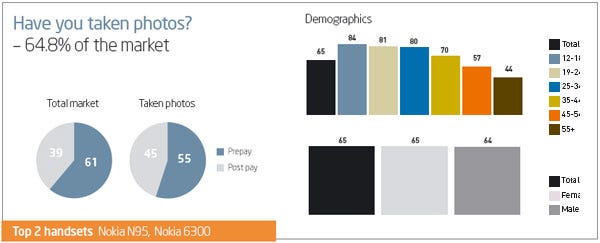
photos
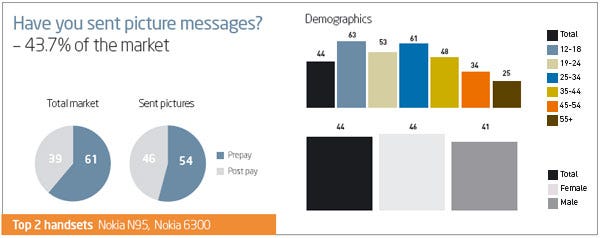
mms
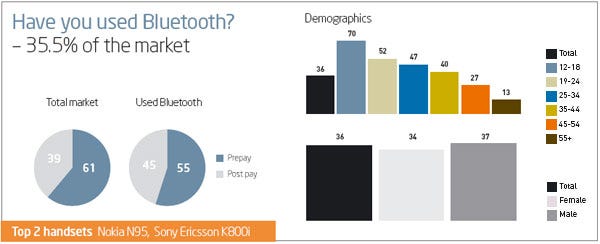
bluetooth
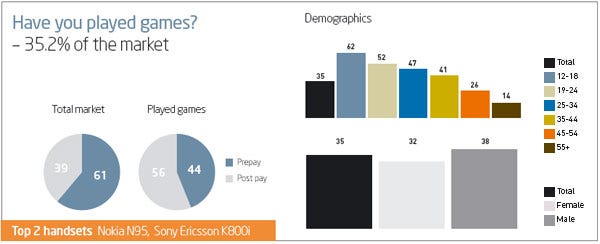
games
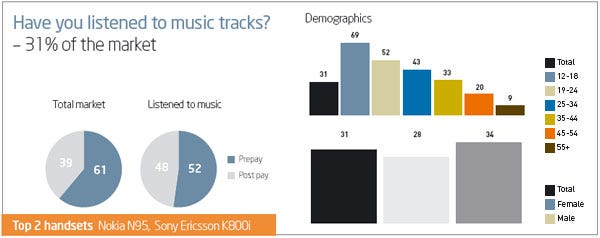
music
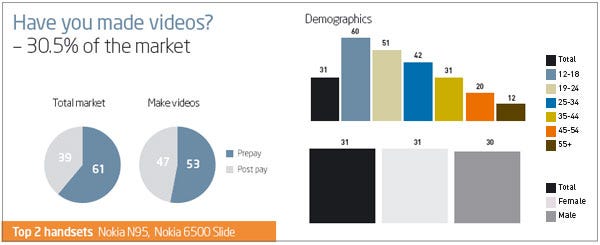
videos
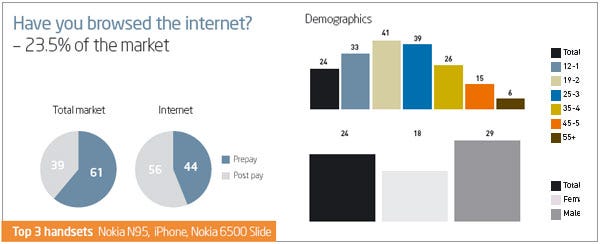
internet
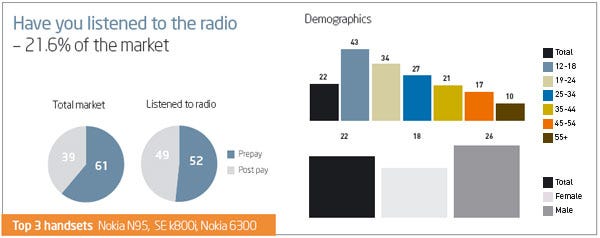
radio
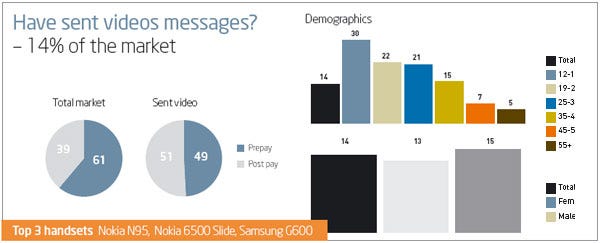
videomessages
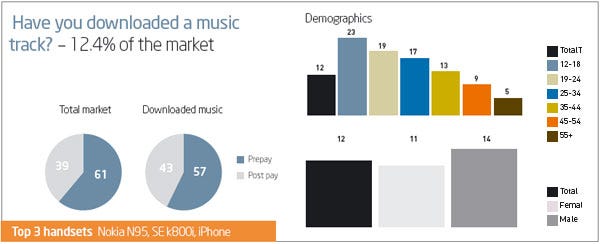
musictrack
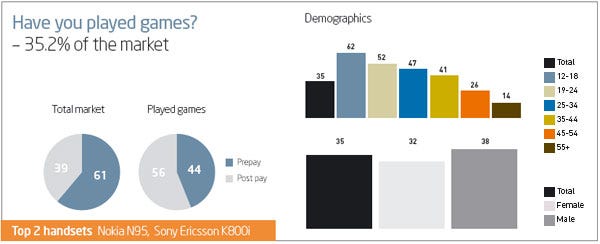
games1
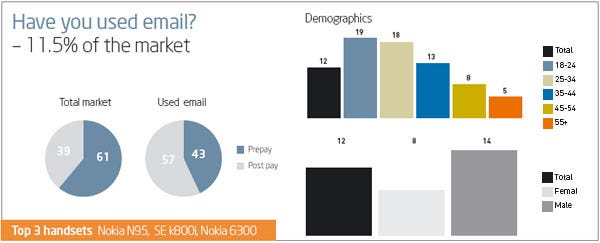
Read more about:
DiscussionAbout the Author
You May Also Like


.png?width=300&auto=webp&quality=80&disable=upscale)







.png?width=300&auto=webp&quality=80&disable=upscale)


_1.jpg?width=300&auto=webp&quality=80&disable=upscale)